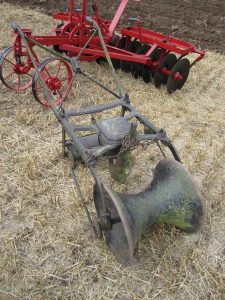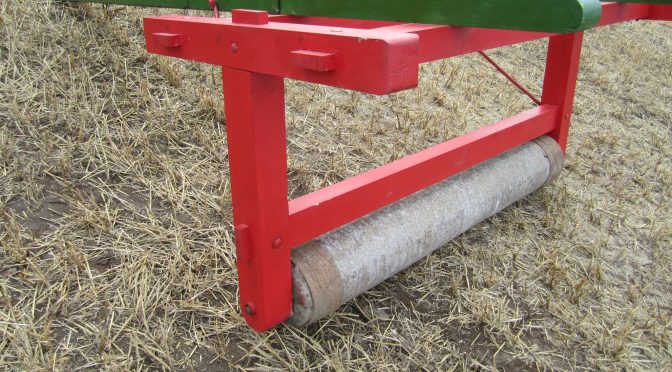The Board of Agriculture and Internal Improvement undertook an important survey of agriculture and rural improvement in Britain from 1793 to 1817. This series was referred to as the County Agricultural Surveys, with each report having the title “General View of the Agriculture of the County of …”. Each survey generally focused on a county or a small number of counties.
 Each survey was systematically undertaken and written up under a number of headings. These included geographical state and circumstances, state of property, buildings, mode of occupation, enclosing, draining, arable and grass grounds, implements, gardens and orchards, woods and plantations, wastes, livestock, rural economy, political economy, obstacles to improvement, and means of improvement.
Each survey was systematically undertaken and written up under a number of headings. These included geographical state and circumstances, state of property, buildings, mode of occupation, enclosing, draining, arable and grass grounds, implements, gardens and orchards, woods and plantations, wastes, livestock, rural economy, political economy, obstacles to improvement, and means of improvement.
The accounts contained detailed accounts of the implements and machines used in each county, together with the changes that were being made to them.
The account for Clydesdale (Lanarkshire), written by John Naismith, provides a range of insights into the character and state of implements used in that county. It is worth quoting at length:
“The ploughs used here are, 1st, the Scotch plough: this well-known instrument has long been esteemed the best for ploughing stiff or stony land. It was preferred to some of the later invented ploughs, as setting up the furrow with a bold shoulder, and so furnishing a plentiful mould to cover the seed. Some improvements have lately been made on it, particularly the head, beam, and stilts or handles, are made shorter, in order to make it easier drawn. It is still found, however, to require greater power to work it than some others, and therefore, since ploughing with only two horses is become more prevalent, this plough is on less esteem.
2ndly, a little plough, brought to this county many years ago from Northumberland; it seems to be the same with that described by Lord Kaimes, under the name of the Rotherham plough, and has been found to answer very well for stirring of fallow.
3dly the Rutherglen plough, invented for the purpose of turning up the deep soil of the valleys with a strong furrow: it has been used chiefly in the neighbourhood of that town.
4thly, Small’s plough: the improvements which this ingenious mechanic made in the construction of the plough, make it easier drawn, and it quickly obtained reputation, and was generally adopted. But it fell short of the perfection aimed at, and has undergone many modulations, almost every plough-wright having its own particular cast of the mould-plate, &c.
5thly, Wilkie of Uddingston’s plough: this profound artist has had the good fortune to discover every thing requisite to the construction of a complete plough, and formed an implement the best adapted to the purpose, of any that has yet appeared in this county. It turns up the furrow with a bold shoulder, like that for which the Scotch plough was valued. Its shape, like that of a well-tapered wedge, turns over the soil with the application of very moderate powers; and its broad-winged share leaves nothing unstirred. There are instance of other different constructions of ploughs, but they seem only to be variations of the kinds above-enumerated.
The common harrows, which are still the most generally used, with four bills or beams, containing 20 teeth, are much the same as have been described in the Reports from other counties. It is found necessary, both for reducing stiff ground, and collecting the roots of weeds, to give the teeth a considerable evil forward, so as to stand at an angle of from 70 degrees to 75 degrees with the plain of the harrow. There are others heavier, commonly called brakes, of different weights and constructions, according to the fancy of the owner, and the purposes for which they are intended. Of late, pairs of jointed harrows have been introduced, each having three bills, and the pair connected by joints, by which, while they are kept together, they are allowed to ply to the surface; the teeth area also placed so as not to follow one another directly in the line of draught. These are drawn by a pair of horses, and have been found to be very executive.
 The roller is an important implement in the culture of the fields. Besides smoothing the surface, and bruising clods, to forward pulverisation, the use of it can never be too much recommended for condensing open soils, in the droughts which frequently succeed in seed time. Even in the heavy soils, which are for the most part but too solid, the application of the roller is of great importance, during the droughts of the spring. By pressing down the mellowed clods around the roots of young grass and wheat, the plants are re-animated, and a fresh luxuriancy soon appears. By compressing the surface of fields sown with spring corn, which, however solid they may naturally be, heave with the spring drought, the interstices are closed, the moisture retained, the roots of the corn fastened, and the progress of the vermin which prey upon them checked. The rollers here are offer stone, or of solid timber, and very rarely of cast iron, this last being too dear for common husbandmen; but the most approved rollers, and which are now getting pretty much into general use, and hollow cylinders built of wood, the circumference clothed round with strong plank; the diameter is about three feet, and the roller is divided into two equal parts, which turn round on an iron axis. The largeness of the diameter makes the draught so easy, that one horse can pull as much weight as two could do of solid stone, and the division of the roller into two parts facilitates the turning, the half on the inside moving back, while that on the outside comes forward.
The roller is an important implement in the culture of the fields. Besides smoothing the surface, and bruising clods, to forward pulverisation, the use of it can never be too much recommended for condensing open soils, in the droughts which frequently succeed in seed time. Even in the heavy soils, which are for the most part but too solid, the application of the roller is of great importance, during the droughts of the spring. By pressing down the mellowed clods around the roots of young grass and wheat, the plants are re-animated, and a fresh luxuriancy soon appears. By compressing the surface of fields sown with spring corn, which, however solid they may naturally be, heave with the spring drought, the interstices are closed, the moisture retained, the roots of the corn fastened, and the progress of the vermin which prey upon them checked. The rollers here are offer stone, or of solid timber, and very rarely of cast iron, this last being too dear for common husbandmen; but the most approved rollers, and which are now getting pretty much into general use, and hollow cylinders built of wood, the circumference clothed round with strong plank; the diameter is about three feet, and the roller is divided into two equal parts, which turn round on an iron axis. The largeness of the diameter makes the draught so easy, that one horse can pull as much weight as two could do of solid stone, and the division of the roller into two parts facilitates the turning, the half on the inside moving back, while that on the outside comes forward.
The drilling implements are, the turnip drill, and one which, by changing nut upon the axis which turns round at the bottom of a hopper, sows wither beans or smaller grain. Both of these sow only one drill at a time, and are used chiefly in the upper part of the county, the heavy sold lower down being less adapted to the drill husbandry. The instruments used for horse-hoeing, are small ploughs of different constructions, all of them very simple.
It is needles to describe the spade, the hand-how, the wheel-barrow, &c simple instruments which, in the hands of the dextrous and intelligent labourer, are perhaps not much less important than all the machinery which has yet been invented for cultivating the ground.
An instrument composed of two sticks joined by a pin, and resembling the smith;s tongs in appearance and use, is applied to pull thistles and docks in the corn fields; but the dock-iron is the fittest instrument for clearing grass grounds of docks. In all cases where the hoe cannot be used, if smaller weeds appeared to prevail so much as to injure the crop, women and children used to be employed to pull them with the hand; but from the scarcity of such hands, and the high price of labour, this is almost given up. Husbandmen now, when annual weeds appear to prevail much among the spring corn, harrow the ground while the weeds are young, and their roots have not taken a deep hold.
The carts of this county are still mostly of a plain and simple construction, at the same time light and strong; but, of late, many alterations ane new constructions have been introduced, which probably tend much more to increase the expense than to add to the conveniency. Indeed, refinements of this kind seem to be unwisely followed in the constructions of many implements of husbandry, and particularly in carts, harnessing, &c so that a horse seems to groan under a load of iron and leather, without any good purpose being served. But the iron axle ought certainly to be excepted, as it compensates in durability, and diminution of friction, the expense of purchase and the weight it adds to the carriage. The general effect, however, of all such refinements, is to abstract a part of the stock of husbandmen from its proper employment. Carts are drawn by a single horse, experience having evinced that, in this way, the animal is capable of the greatest exertion.
The sickle is almost the only instrument used in reaping. Several mowing instruments have been introduced, but soon given up, and now that thrashing-mills are coming much into se, it is probable the use of the sickle will be still more confirmed, as corn thus reaped is in best order for thrashing in the mill.
Every farm has manners, and there are now a good many thrashing-mills in different parts of the county. Where these are wanting, a considerable part of the corn is thrashed with flails by the farm servants, in the winter mornings, by candle light.
Haven’t farm implements and machines changed significantly over the last two centuries!
The photographs of the wooden implements were taken at the Strathnairn vintage rally, 2015.
